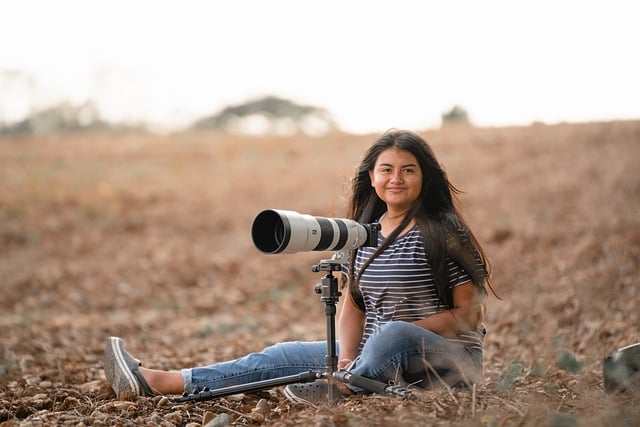Understanding the Landscape of Photography as a Side Hustle
Photography presents an incredible opportunity for those who enjoy capturing moments, be it through a camera lens or a smartphone. If you’re a budding photographer or someone who has always loved taking pictures, launching a photographer side hustle can be both fulfilling and lucrative. It allows you to express your creativity while supplementing your income. Note that the world of freelance photography is vast, filled with various niches and styles, each offering unique opportunities. You could specialize in portrait, landscape, event, or product photography, among others. Thus, it’s crucial to identify what excites you the most and what aligns with your existing skills. This personalization sets an excellent foundation for your side business.
Every journey begins with that first step. For aspiring photographers, that may very well be the decision to establish a side hustle. It’s inevitable that the logistics of setting up your freelance photography venture can feel overwhelming. Many forget that every professional photographer started somewhere, often with little more than a passion for photography and an old camera. The important thing is to convert that passion into a profitable endeavor. So, where do you even begin? Start with delving into your current skills and camera capabilities.
Before you rush into the market, take time to develop your photography skills. There are abundant resources available online—free courses, YouTube tutorials, and blogs dedicated to photography techniques and tips. Understanding exposure, composition, and lighting can significantly enhance the quality of your work. Moreover, practice consistently, because the more you shoot, the better you’ll get. While reading can help you gain knowledge, nothing beats hands-on experience. Over time, your confidence will grow—leading you to create a captivating portfolio that showcases your best work.
Building a Strong Portfolio
Your portfolio is your calling card in the world of freelance photography. It’s the first thing potential clients will want to see, and it needs to reflect your unique style and expertise. Gone are the days when a photographer could rely solely on printed portfolios. Today, a sleek website or a well-curated Instagram account acts as your visual resume. Assemble a collection of your best images that highlight different aspects of your photography skills. If you don’t have paid gigs yet, consider doing shoots for friends, family, or local businesses. That strategy not only provides you with material for your portfolio, but it also helps you gain experience and valuable client feedback.
Striking variety is the name of the game when it comes to showcasing your works. Include different styles and subjects to attract a broader audience. Portrait photography exhibits your skill in capturing emotions and personalities, while street photography can display your talent for seizing moments in real time. If product photography catches your fancy, consider collaborating with local businesses. This approach can help you gain exposure while filling your portfolio with quality work. Remember, a well-crafted portfolio should not only highlight your skills but also tell a story about your journey as a photographer.
As you construct your portfolio, pay attention to presentation. A clean, user-friendly design goes a long way in making your work shine. Choose a layout that allows viewers to focus on the images themselves without unnecessary distractions. Also, include a brief introduction about yourself and your photography ethos. This personalized touch helps potential clients connect with you on a human level, which could facilitate future collaboration. Ultimately, your portfolio serves as a gateway; it should wow potential clients and encourage them to reach out for your services.
Setting Your Pricing Structure
When operating a photographer side hustle, determining your pricing can indeed feel daunting. If you price too low, you risk undervaluing your work; set your rates too high, and you might scare away potential clients. It’s crucial to strike that delicate balance. Conduct thorough research on what other freelance photographers in your niche are charging. Websites like Thumbtack or even social media groups may provide insights into average rates. Furthermore, consider your levels of experience, skill sets, and the unique qualities you bring to the table. Don’t hesitate to take into account expenses such as equipment, travel, and time spent editing.
One effective pricing tactic is to offer packages. A basic session may include a certain number of edited photos, while a premium package could feature additional benefits like prints or a photo book. Packaging your services enables clients to see the value you offer and helps you cater to various budgets. However, be careful to ensure that delivering on different packages is sustainable for you. Also, don’t forget to factor in time, as editing photos can sometimes consume even more time than the shoot itself!
Also, consider offering occasional promotions or discounts to attract new clients. These can be especially appealing during holidays or local events. However, plan these strategically. If you give away too much for free or at a discount, it may become hard to elevate your rates later on. Above all, it’s immensely vital to remain transparent about your pricing. Clearly outline what’s included in your packages and how much clients can expect to pay, avoiding any hidden fees. A strong pricing strategy not only conveys professionalism but also instills confidence in potential clients.
Marketing Your Photography Side Business
Marketing represents one of the most thrilling yet challenging aspects of launching your photographer side hustle. In today’s digital age, building a strong online presence is essential. Start by creating a professional website that serves as your portfolio, contact page, and blog if you wish. This site should be easy to navigate and optimized for search engines, ensuring that people can find you when looking for freelance photography services. Also, don’t underestimate the power of social media. Platforms like Instagram, Facebook, and Pinterest are visual-centric and provide an excellent stage to showcase your work.
Engagement plays an equally important role in your marketing efforts. Don’t just post your photos and disappear—interact with your audience! Answer comments, ask for feedback, and engage with other photographers. Networking can lead to collaborations and referrals that serve you well in the long run. Additionally, consider local marketing strategies as well. Participate in community events or fairs, or offer to showcase your work at local galleries or cafes. Even simple word-of-mouth, generated through satisfied clients or local residents, can foster organic growth.
Finally, utilize email marketing to maintain contact with potential clients and keep them updated on your offerings. A monthly newsletter showcasing new work, promotions, or tips can be an effective way to build relationships and keep your audience engaged. Don’t forget to include clear calls to action, inviting them to book sessions or reach out for inquiries. Investing time and effort into your marketing strategy ultimately pays off, turning potential clients into loyal customers who keep coming back.
Continuously Developing Your Skills
As with any creative field, the world of photography is ever-evolving. Trends change, technology evolves, and new techniques emerge regularly. Therefore, continuous learning is crucial to keeping your side hustle vibrant and competitive. Seek out workshops, webinars, and online courses that help you expand your skill set. Dive into everything from advanced editing techniques to capturing tricky subjects. The more well-rounded you become, the more appealing you will be to potential clients.
Feedback is another beneficial tool for your growth as a photographer. Consider creating a small circle of fellow photographers or friends who can generously critique your work. Constructive criticism can illuminate areas for improvement and keep you striving for excellence. Additionally, documenting your creative journey or keeping an online blog can serve multiple purposes. It not only showcases your growth but also builds a connection with your audience by drawing them into your story.
Lastly, as a freelancer, staying abreast of industry developments becomes necessary. Subscribe to photography magazines or follow relevant blogs that discuss industry news, new gear releases, and advancements in techniques. Understanding where photography is headed will help tailor your offerings accordingly, ensuring you stay relevant in the marketplace. Consistent development rejuvenates your passion for photography, uplifts your side business, and contributes to long-term success.
Creating a Client Experience
Establishing a successful photographer side hustle involves more than just taking stunning images. The client experience—encompassing everything from the first point of contact to post-shoot communication—plays a pivotal role in turning one-time customers into repeat clients. A positive, professional experience elevates your brand and invites referral opportunities. Start by developing a smooth booking process. Use scheduling tools that allow clients to easily see your availability and book their shoots online. Additionally, following up promptly on inquiries demonstrates your commitment to potential clients and reflects your professionalism.
Once booked, ensure open lines of communication. Share details about what clients can expect during the session, including locations, wardrobe suggestions, and any necessary preparations. This transparency builds trust and sets the stage for a seamless experience. During the shoot itself, engage with your clients, making them feel comfortable and at ease. Remember, photography is not only about capturing images; it’s also about storytelling and evoking emotions. A fun, relaxed session can lead to authentic expressions and candid moments, making your job even more rewarding.
After the shoot, maintain the momentum by providing timely delivery of the images along with personalized follow-ups to express your appreciation for their business. Consider adding a handwritten note or a small gift as a token of gratitude. This level of care influences the client’s overall experience, reflecting positively on your brand. Happy clients are likely to share their experience with others, resulting in more business for you in the long run. Thus, going the extra mile solidifies your reputation as a reliable and friendly freelancer, further nurturing your side hustle.
FAQ Section
1. What equipment do I need to start a photography side hustle?
While the type of equipment you need can vary depending on the niche you choose, a good starting point includes a reliable camera, a tripod, and basic editing software. It’s useful to invest in quality lenses and lights over time, but you can start small.
2. How do I find clients for my freelance photography business?
To attract clients, utilize social media platforms, create an engaging website, and consider networking in your local community. Word-of-mouth referrals from satisfied clients can also significantly boost your client base.
3. Should I have a formal business license for my photography side hustle?
It depends on your location. Some regions require freelance photographers to register their business or obtain specific permits. It’s wise to check local laws to ensure compliance and legitimacy.
4. How can I stand out as a photographer in a competitive market?
Differentiation lies in your unique style and service offerings. Focus on a specific niche, develop a strong portfolio, and engage genuinely with your audience to create a memorable brand.
5. What should I include in my photography contracts?
Your contracts should outline the scope of work, pricing, payment terms, and delivery timelines. Clearly state usage rights for the images to avoid misunderstandings in the future.



